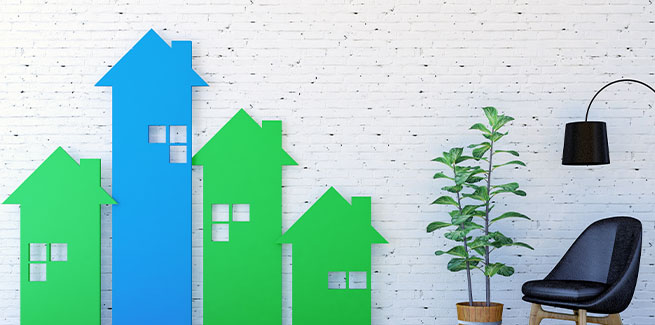Analysis by KPMG Economics has revealed that house prices are expected to be between 4 per cent and 12 per cent higher and unit values are expected to be up to 13 per cent higher than they would have been in the absence of the coronavirus pandemic.
The Australia’s Residential Property Market post-COVID-19 report found that Sydney led the differences in the prices in capital cities over the four years from December 2019 to December 2023 in COVID-19 and no-COVID-19 scenarios, with a predicted 25 per cent rise now, compared with what would have been a 13 per cent rise in a no-COVID-scenario.
Brisbane has ranked second, with a 19 per cent rise in a COVID-19 world until December 2023, compared with a no-COVID-19 8 per cent increase.
KPMG has provided the estimated impact that COVID-19 could have on property prices in the capital cities by December 2023, with data showing that the median price of detached dwellings could rise to $1.24 million in Sydney with COVID-19 (up from $1.12 million in a no-COVID-19 scenario).
Across the other capital cities, with the COVID-19 impact, detached dwellings are estimated to rise to $940,000 in Melbourne (up from a no-COVID value of $905,000), $661,000 in Brisbane (up from a no-COVID value of $601,000), $576,000 in Adelaide (up from a no-COVID value of $537,000), $667,000 in Perth, (up from a no-COVID value of $650,000), $701,000 in Hobart (up from a no-COVID value of $651,000), $501,000 in Darwin up from a no-COVID value of $455,000), and $913,000 in Canberra (up from a no-COVID value of $846,000).
While property prices were predicted to rise across all capital cities except Darwin pre-COVID (with Sydney on the cusp of a significant price rise, which would have flowed through to Melbourne and Brisbane related markets), the onset of the COVID-19 crisis resulted in price declines of between 0.3 per cent (Hobart) and 2.8 per cent (Melbourne) during the June 2020 quarter.
In questioning why property prices have been soaring, KPMG Australia chief economist Dr Brendan Rynne said that the record-low interest rates maintained by the Reserve Bank of Australia during this period, along with government stimulus packages (including the HomeBuilder and JobKeeper package), and additional savings from individuals in households during the pandemic (from not spending on holidays and recreational activities) have outweighed the longer-term negative impacts associated with the housing market such as lack of migration and slower population growth.
This has seen property prices rise significantly in the past six to nine months, past the point to where they would have risen under a no-COVID-19 scenario, he said.
Additionally, supply has also played a role, with KPMG analysis of dwelling approvals in the big cities showing that in Melbourne and Sydney, there are likely to be 25,000 and 20,000 fewer houses and units respectively available than would have been the case in a no-COVID-19 scenario, Mr Rynne added.
However, the report has also stated that there is an expectation that house price growth would moderate in the next few years as mortgage interest rates begin to climb and the impact of lower-than-anticipated population growth is felt.
“As previously discussed, over the longer term, real house prices in Australia have a tendency to revert back to equilibrium levels consistent with underlying demand and supply factors,” the report said.
“This tendency means that that as property prices get further away from the underlying equilibrium level, there is a build-up of pressure for the market to cool down if prices are above the long run equilibrium level, and vice versa if prices are below the equilibrium level.”
Furthermore, the report stated: “Our analysis suggests that the recent spike has moved house prices further away from the estimated equilibrium price levels. Our expectation is that this disequilibrium will start to contract.
“Over the next two to three years this will place downward pressure on prices and eventually outweigh the positive impacts on prices of the shorter-term factors, which are expected to weaken over time.”
Dr Rynne noted that the RBA has continued with the “extremely dovish” monetary policy settings despite slightly winding back on the bond-buying program, which he said played a key role in emerging from the recession early in the pandemic last year.
However, he said that the domestic economy has rebounded strongly and unemployment has returned to pre-COVID-19 levels, while asset price inflation is still rising.
He said: “So, the challenge now is how to steer the economy through this stabilising period without it becoming unbalanced.
“Of increasing concern is the balance between investment activity in the residential property sector and investment activity in the business assets that will potentially stimulate productivity and generate higher returns in the future.
“If this continues, there is a risk the nation’s portfolio of economic assets could become distorted, which will negatively impact living standards in the future.”
[Related: Australian cities’ house prices among world’s fastest rising]
 ;
;
